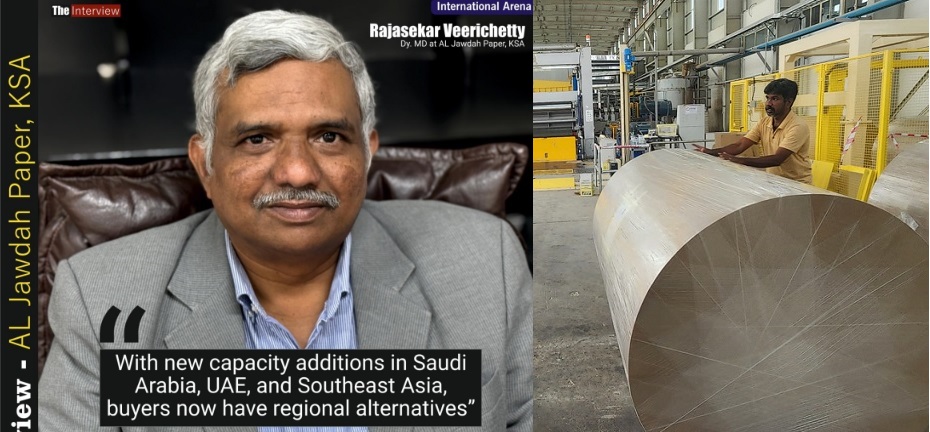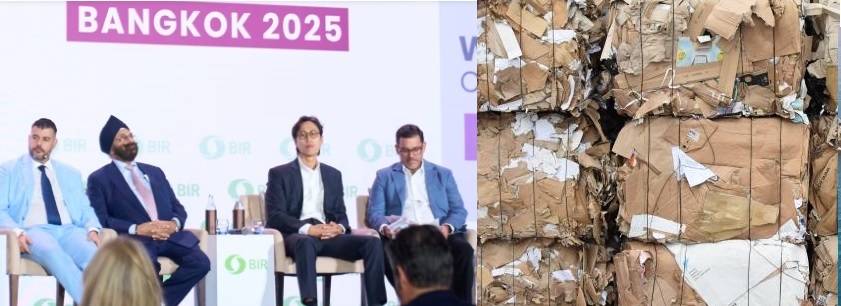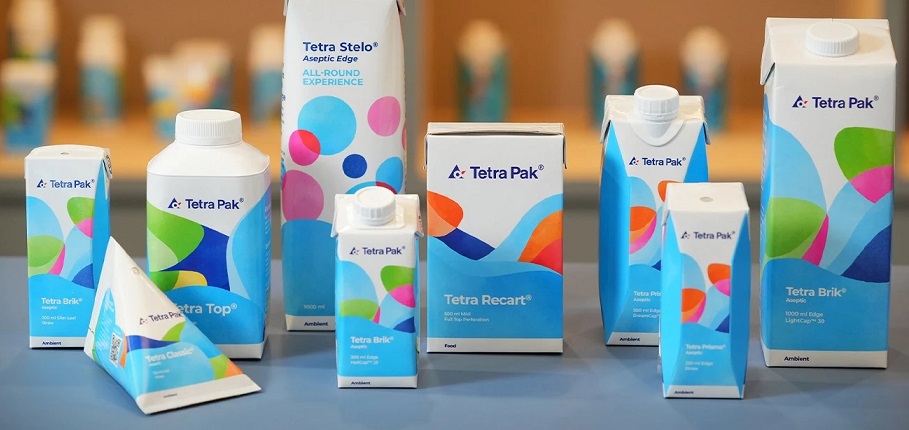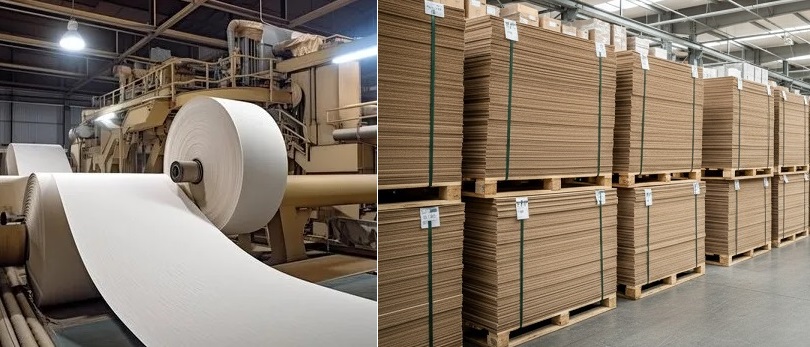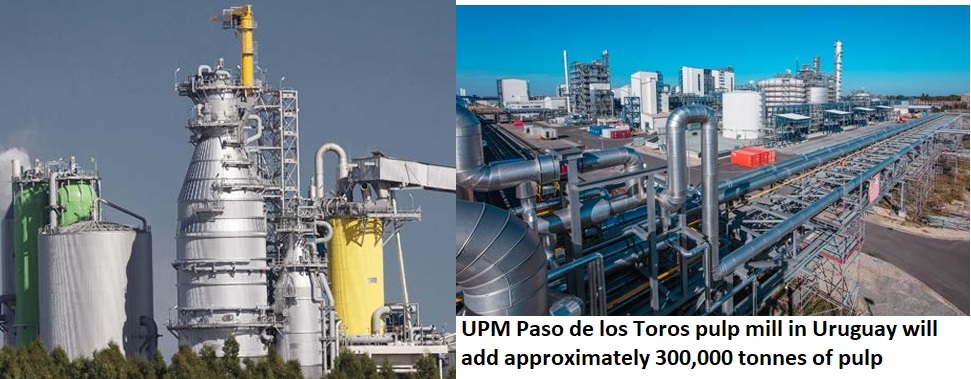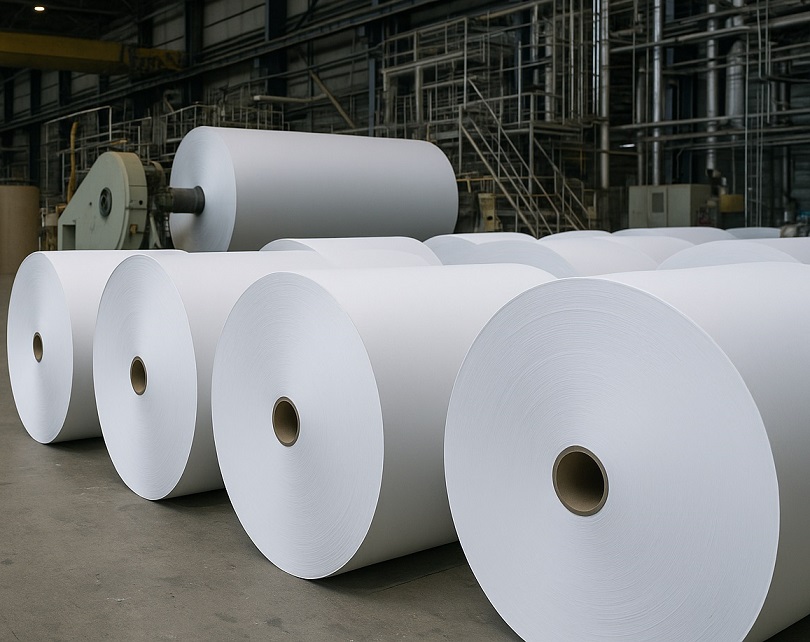The capacity increases currently occurring in China and expected in Indonesia in 2026 or 2027 will keep suppliers looking for outlets for their production, says Ms. Beth Lis of Fastmarkets RISI
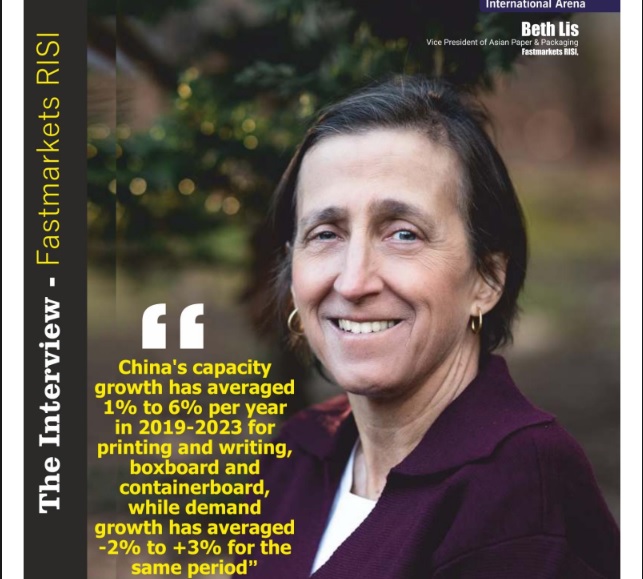
The capacity increases currently occurring in China and expected in Indonesia in 2026 or 2027 will keep suppliers looking for outlets for their production, says Ms. Beth Lis of Fastmarkets RISI
Key Points :
“Our estimates show India’s net import share stabilizing in 2024. Exports have shown some resilience this year and imports continue to rise, but with growth in demand as well, the net import share has not changed”
"European pulp imports could be restricted due to EUDR, leading to higher costs for local paper producers. This, in turn, creates opportunities for suppliers from other regions, including Asia"
"EUDR could prompt more recycled fiber usage in Europe in the coming years, thus impacting volumes available for export into Asia"
"In China, operating rates of printing and writing, containerboard, and boxboard have dropped off sharply to an average of 66%-84% in 2023 and are dropping to an estimated 65%-78% in 2024"
In an exclusive conversation with The Pulp and Paper Times, Ms. Beth Lis, Vice President of Asian Paper & Packaging at Fastmarkets RISI, delves into the intricate challenges and opportunities within the Indian paper market. She sheds light on the current trends in WPP, containerboard, and boxboard, discusses overcapacity issues, and anticipates developments in recovered paper supplies. Additionally, she highlights the risks associated with EDUR and the surplus capacity in the Chinese market. Ms. Beth Lis shares her invaluable insights into the nuanced landscape of the industry. Here is her full interview
The Pulp and Paper Times
Q: Please give a brief introduction to Fastmarkets.
Fastmarkets is an industry-leading PRA and analytics provider for the agriculture, forest products, metals and energy transition commodities’ markets. Fastmarkets serves its customers with commodity benchmark prices and assessments, forecasts, analytics, mill intelligence, insights, news and events. Its data are critical for customers seeking to understand and predict dynamic, sometimes opaque markets, supporting decision making and enabling trading and risk management.
Fastmarkets is a global business with a history dating from 1865 and is built on trust and deep market expertise. It has more than 650 employees spread across several global locations including the UK, US, China, Singapore, Brazil, Bulgaria, Belgium, Ukraine and Finland.
Fastmarkets is a privately held UK-registered company owned by its shareholders and Astorg, a European private equity firm.
Q: How do you evaluate the current market conditions for India and China, specifically in the WPP and packaging paper segments, regarding demand and pricing trends?
The clearest description of market conditions for printing and writing, containerboard and boxboard in Asia is oversupplied and this applies to China and India as well. For China, it is because of an ongoing increase in capacity, while demand growth is below trend due to its sluggish economy. China’s economy is relatively weak, in part because of its struggling property market, which in the past has contributed substantially to economic growth. The retreat in the property market has hurt employment. Further, both negative wealth effect on households due to the drop in property prices and concerns on employment have made consumers more cautious in their spending. China’s capacity growth has averaged 1% to 6% per year in 2019-2023 for printing and writing, boxboard and containerboard, while demand growth has averaged -2% to +3% for the same period, meaning that capacity growth has exceeded demand growth by 2%-3% per year for these three grades over the last five years. Producers of boxboard and to a lesser extent printing and writing papers have been able to expand their exports to address a little of the excess capacity, but operating rates have dropped off sharply to an average of 66%-84% in 2023 across the three grades and are dropping to an estimated 65%-78% in 2024. These low operating rates have contributed to a downward trend in prices.
For India, its demand growth has remained robust in 2024, as markets continue to recover from the pandemic lows. But India’s markets are being impacted by the overcapacity across the region as Asian producers look to expand their shipments into India and competition grows in export markets. Our estimates show Indian net imports of printing and writing paper increased over 2022 and 2023, although their overall level is similar to the net import level in 2019. This shift over the last two years came as exports faced more competition and were obstructed from markets in the Middle East and Africa due to the Red Sea crisis. Imports were also rising as other Asian producers looked for outlets for their production. Our analysis indicates that Indian net imports are moving modestly higher in 2024 as imports are rising more than exports. Operating rates are remaining low, albeit a bit better than in 2023 (which suffered in part due to rapid capacity growth).
For containerboard, Indian demand growth also remains healthy this year, registering an estimated 8%. Operating rates are remaining down though due to capacity expansion and shifts in trade. India became a modest net exporter of containerboard in 2018. Its net exports climbed substantially during the pandemic, reaching a peak in 2022, but since then have retreated to more normal levels as the tightness in global markets eased. In 2024, the retreat in net exports is continuing with imports moving higher while exports decline. The drop in exports mostly is due to lower exports to China due to the weak market there.
Finally for boxboard, similar to containerboard, we estimate solid growth in demand, but operating rates will remain low given shifts in capacity and trade. India’s imports of boxboard are climbing as Chinese suppliers ship more into India, with other suppliers also seeing gains. Exports are rising more modestly, with increases into other parts of Asia and the Middle East, although not nearly to the levels in 2022.
Q: Recently, the Ministry of Commerce and Industry of India, Department of Commerce (Directorate General of Trade Remedies), initiated an anti-dumping investigation into imports of virgin multilayer paperboard from Chile and China. Do you think an anti-dumping duty is necessary to protect Indian manufacturers or to address the oversupply in the board segment?
I am not able to comment specifically on the current investigation. What I can say is that currently there is a tremendous amount of oversupply in the virgin boxboard/ivory board market in Asia. This oversupply has been prompted by a wave of capacity expansion in China and a recent increase in Indonesia, in part with expectations of healthy demand growth in the region and gradual transition from plastics to paper. But the capacity growth has gotten ahead of the demand growth, in part due to the pandemic, China’s relatively sluggish economic growth and high inflation in many parts of the region have affected consumer spending and packaging use. As a result, we are seeing rising exports of virgin boxboard coming from China and Indonesia as producers in these countries look to expand markets for their output. This is not just affecting Indian producers, but producers in many other regions of the world.
Q: India has added significant production capacity in recycled kraft paper and duplex board without major innovations in product offerings. Exports have declined, and prices remain flat. What is your long-term perspective for the packaging segment, and are there any solutions to the overcapacity issue?
Broadly, we are optimistic for Indian packaging paper markets in the long-term. Much of this optimism stems from the prospects for India’s economy, with its relatively good demographics, expected increases in incomes and opportunities to support global supply chains as multinational companies look to diversify. To maintain this optimism, India will need to continue to invest in education and infrastructure to support the development of its economy. Specific to the production of packaging papers, the biggest headwind will involve fiber availability. India has some dependency on outside fiber for both wood and for recovered paper. The market for recovered paper globally may become tighter with the likelihood of rising use in major supplying regions including the US and Europe. If India is successful in improving it internal collections that likely would help.
Q: Being closely associated with the paper market, how would you differentiate the sustainability approaches of Indian and Chinese paper manufacturers, and how do they manage pricing structures amid global factors and headwinds?
I do not have extensive knowledge on specific companies and their sustainability approaches and management of pricing structures. What I can say is that many companies are paying attention to sustainability as it becomes a more public issue, with rising concerns over plastics in the environment and climate change. But typically, more sustainable practices come at a cost and so government regulation may be required. In addition, it could be customer initiated, as global multinationals work to meet their own sustainability goals. Consumers often express a willingness to pay, but the recent bout of inflation seen almost globally has affected consumers’ budgets and not always worked in the favor of sustainability. If inflation continues to retreat, it could help drive more acceptance of sustainability goals.
Q: How would you predict graphic paper demand in India? Will prices continue to be influenced by cheap imports? Is the Indian paper market becoming an import-based segment?
India is one of the few markets in Asia where we have a fairly positive outlook for graphic paper demand over the next several years. This optimism stems from demographics and the government’s ongoing focus on education and associated revisions to curriculum that are underway. In addition, the healthy economy and rising incomes will help support demand for graphic papers; even as digital and e-media capture more of the market, there will remain a role for print media. India’s market will continue to be attractive to other Asian suppliers, especially with the low or negative growth rates we expect in many other markets in the region. The capacity increases currently occurring in China and later expected in Indonesia in 2026 or 2027 will keep suppliers in these countries looking for outlets for their production.
India’s net import share of apparent consumption for printing and writing paper grades rose from 1% in 2021 to 11% in 2023. This increase occurred as exports declined and imports increased. The decline in exports was led by uncoated woodfree, with drops in other grades as well. There was a noticeable drop to the Middle East and Africa, likely as some of the pandemic bottlenecks eased and now as the Red Sea crisis affects India’s ability to ship to some of these markets. The increase in imports over the two years largely came from rising imports of uncoated woodfree paper from China and Indonesia, with some gains in coated grades as well. Our estimates show India’s net import share stabilizing in 2024. Exports have shown some resilience this year and imports continue to rise, but with growth in demand as well, the net import share has not changed. We predict that the net import share will remain at a similar level over the next few years, although there is a definite risk that it could rise given the overcapacity in the region.
Q: With leading manufacturers in developed countries transitioning to more sustainable alternatives like paper bags, the writing and printing paper segment is experiencing a significant transformation, with an urgent need for innovation in this product profile. What is your outlook on the declining WPP market?
Note, I am not entirely sure on the premise of the question with its focus on shifts to paper bags .. happening but a relatively small segment of packaging demand .. I think more of the shifts are to other packaging grades.
Not surprisingly, we predict that the global decline in printing and writing paper demand will continue. We expect ongoing shifts towards digitization, demographic shifts with aging populations translating to less school-related use, and ongoing shifts towards e-readers and e-media will continue to reduce global demand. Global demand has dropped an average of 3% per year over the last 15 years and 6% per year over the last five. Our projections show an average drop of 1% per year in 2024-28, less of a drop than in recent years, in part because of some recovery expected in 2024 after the particularly sharp declines in 2023.
Q: What is your outlook for the Indian recycled containerboard market, including growth, pricing, and export trends?
Our forecast for India’s containerboard market (which is mostly recycled) is for ongoing healthy demand growth due to India’s solid economic growth, increasing purchases through e-commerce and rising exports of goods. We project that containerboard demand will climb an average of 7% per year over the next five years. Net imports will rise at a moderate pace, but local production will feed much of the growth in demand. We do anticipate some increase in operating rates in the near term, but this assumes more moderate capacity increases in India. OCC availability and pricing will prove key in determining export levels as well as pricing trends.
Q: Since the beginning of FY 24-25, paper prices have steadily declined month after month in India, reaching levels where mills are now operating with virtually no margins. This has been further exacerbated by an unprecedented surge in wood prices. However, market oversupply is expected to continue in FY25. Do you anticipate a contraction in margins due to future oversupply? How do you foresee year 2025 for Indian Paper Manufacturers?
I agree that oversupply will remain a dominant force in Asian markets in 2025. Demand prospects in many Asian markets in the first half of the year will remain dampened due to sluggishness in China’s economy as it continues to grapple with the headwinds from the ailing property market as well as cautious consumer spending. Uncertainty over trade and tariffs will just add to the caution until it becomes clearer what President-Elect Trump implements for trade policy (both related to China and the rest of the world). Margins are likely to remain weak and of course will depend on costs as well as prices. We do not anticipate much inflation in recovered paper costs early in the year, but we do expect some increases as we move through the year when global and regional demand conditions improve.
Q: Do you believe mergers and acquisitions in global pulp production could lead to a monopolistic market for paper manufacturers in the near future?
I would like to skip this question ... not entirely sure of the premise and rather not talk about monopolies.
Q: The European Union Deforestation Regulation (EUDR) mandates that products be deforestation-free, produced in compliance with relevant laws, and accompanied by a due diligence statement with precise geographic coordinates. How do you foresee the graphic paper and pulp market evolving post-EUDR implementation?
As my Fastmarkets colleague in Europe, Alejandro Mata, has said, EUDR poses significant challenges to the pulp and paper industry due to uncertainty on its implementation, potential cost increases and supply chain complexities. One of the key risks is around pulp as Europe imports a large amount of pulp, mostly from Brazil, the US and Chile. If, as a result of EUDR, availability of these supplies is restricted in Europe it will lead to higher local pulp prices and therefore higher costs for local European paper and board producers. This in turn could impact the competitiveness of European suppliers in overseas markets, creating opportunities for suppliers from other regions including Asia. At the same time, suppliers from other regions may be unable to place shipments into Europe due to non-compliance with EUDR. Depending on volumes, it could lead to lower prices outside of Europe, if pulp or paper and board suppliers have to place larger volumes in these markets. One additional potential development is that EUDR could prompt more recycled fiber usage in Europe in the coming years, thus impacting volumes available for export into Asia.
Q: The import of OCC to India has declined significantly due to the Red Sea crisis and reduced demand. What is your perspective on the recovered paper demand trend amid growing capacities in Southeast Asia and Europe?
We expect rising demand for recovered paper both in Asia and in Europe as packaging paper demand grows, with recycled-based containerboard continuing to increase its share of the market relative to virgin containerboard. Even though China cannot import recovered paper directly, the trend in its growth (and its economic recovery) will be an important factor in the growth in regional recovered paper demand as it continues to import recovered paper pulp and recycled containerboard from Southeast Asia and other parts of Asia due to the declining quality of its local recovered paper. Also, with rising use in key supplying regions like Europe and the US, it will not be surprising to see a supply crunch in Asia in the years ahead.
Web Title: The capacity increases currently occurring in China and expected in Indonesia in 2026 or 2027 will keep suppliers looking for outlets for their production, says Ms. Beth Lis of Fastmarkets RISI





 Join WhatsApp Group
Join WhatsApp Group Join Telegram Channel
Join Telegram Channel Join YouTube Channel
Join YouTube Channel Join Job Channel (View | Submit Jobs)
Join Job Channel (View | Submit Jobs) Join Buy Sell Channel (Free to Submit)
Join Buy Sell Channel (Free to Submit) Paper News Headlines Channel (Free to read)
Paper News Headlines Channel (Free to read)






